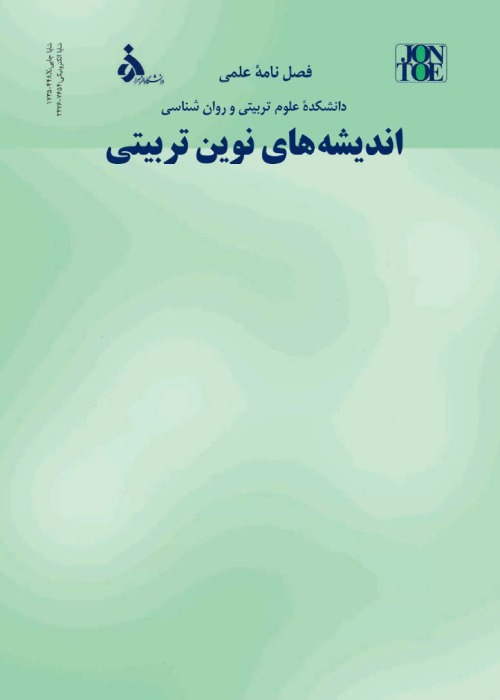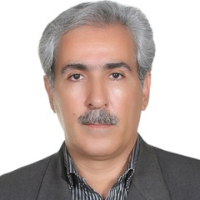Decentralization strategies in the Iranian education system
The aim of this study was to present decentralization strategies in the Iranian education system by identifying weaknesses, strengths, opportunities and threats to decentralization through "SWOT" matrix. Preliminary data for identifying internal and external factors influencing the way education is administered were obtained through semi-structured interviews with 25 experts and senior and middle managers of education. Analysis of the interview transcripts led to the emergence of sixteen internal factors and eighteen external factors. Results were sent to the participants for validation and rating. The sum of the final weighting coefficients in both internal and external domains shows that the current status of education and its strategies are not effective enough to reduce weaknesses and threats or exploit strengths and opportunities. Comparison of factors in the analytical matrix led to the emergence of thirteen strategies in competitive, aggressive, defensive and conservative domains. These strategies can use opportunities and strengths to control threats and weaknesses and facilitate the effective implementation of decentralization schemes.
Iran enjoys diverse climates, economic and social conditions and subcultures. Therefore, residents of each region have different educational needs. Meanwhile, Iran's education system has a completely centralized structure which offers the same educational programs and lessons throughout the country. Education plays an important role in the development process. Therefore, there is an urgent need for internal development of this institution on which all aspects of development depend. A large organization such as education department with so many problems in planning, organization, coordination, supervision and leadership, a school-based management should be developed and applied (Jafari, 2021). Furthermore, centralized management of education in Iran has reduced the inefficiency and effectiveness of schools. Therefore, experts have emphasized the need for revising and transforming education system in line with decentralization and delegation of authority (Jafari Moghadam & Fani, 2002). Many administrators and experts acknowledge the inefficiency of the current centralized structure, emphasize the need for decentralization of the Iranian education system, and mention concentration as the cause of many problems in Iran's education system (Farhadi Rad et al., 2019). Another study also confirms the necessity of revising the centralized educational system of a country with the climatic, cultural, social and economic characteristics of Iran (Quak, 2020; EASNIE, 2017). Therefore, the main objective of this research is to identify and introduce strategies that can use internal organizational strengths and environmental opportunities to manage the weaknesses and threats in the direction of decentralization in Iran's education system.
This research is a qualitative study based on grounded theory. The data collection tool was a semi-structured interviews. The data recorded in the interview process was coded based on the SWOT model to identify and extract internal factors (weaknesses and strengths) and external factors (opportunities and threats). For this purpose, the internal strengths and weaknesses of education and environmental opportunities and threats that can hinder or facilitate decentralization were identified and coded based on the experiences and studies of the participants.The target population in this research included senior high and middle managers of education after the Islamic Revolution, who had more management experience, and experts with studies related to education. Purposive sampling was used to select 15 managers with the most managerial records in education and 10 experts. Despite achieving theoretical saturation by 14 interviews, eight other managers and experts were also interviewed online in order to strengthen the validity of the data. The identified factors resulting from open coding, which were approved by the participants, were classified during axial coding under the categories of strengths, weaknesses, threats and opportunities, and validated through member check and external check. The weighted score of the factors was calculated based on the opinion of the participants. Four strategies were identified in the final matrix and prioritized based on the quantitative strategic planning matrix (QSPM).
According to the opinions, experiences and studies of the participants, the weaknesses and threats were experienced far more than the strengths and opportunities. In this analysis, ten threats and ten weaknesses were identified. Meanwhile, six internal organizational strengths and eight environmental opportunities were identified, which were approved by the participants and supervising experts. The final score in both internal and external domains was less than 2.5, which shows that the current strategies have not been effective in dealing with the existing factors. The set of internal factors (strengths and weaknesses) and external factors (opportunities and threats) identified are reflected in Table 1.SWOT matrix analysis also led to the identification of three aggressive strategies, four competitive strategies, three defensive strategies and three conservative strategies. The matrix for determining the four strategies is shown in Table 2.The output of QSPM shows that the strategy of "gradual increase in the powers of provincial, district and school councils" with a score of 3.37 is the first priority and the strategy of "empowering human resources" with a score of 2.22, is the last priority. We are providing solutions for each of the identified strategies. These solutions were identified in the process of coding the interview transcripts, based on the participants’ opinions. Some of the most important solutions include continuous communication with the members of the parliament (MPs) and inviting them to participate in the meetings of the educational councils, compiling local plans in line with the reform document with the participation of managers, teachers and experts in each region, developing and strengthening agricultural, technical and vocational schools in local fields of study, forming scientific associations, gradual delegation of parts of the responsibility of monitoring educational content and quality to related associations, designing and implementing programs to acquaint local students with common cultural roots, facilitating the establishment of schools affiliated to the public and private sectors, presenting incentive schemes for the transfer of headquarters forces to districts and schools, forming the Strategic Council for Education Reforms with the presence of representatives of the legislative, judicial, executive and influential institutions and creating communication networks between scientific associations and regional councils.
Experts and even education managers agree on the problems of the ineffectiveness of the current centralized structure of education and the necessity of its reform and decentralization. This structure does not respond to individual and social needs and environmental changes, and it should be modified according to the current conditions. However, factors inside and outside the system have always prevented reform and decentralization. Some of these factors are caused by the centralized structure of the political system and some are due to the resistance of powerful groups who prevent decentralization in order to protect their interests. The application of strategies such as "formation of the Strategic Council of Reforms" and "establishing continuous communication with political managers and MPs" to gain the support of political and legislative power institutions, facilitates the implementation of decentralization. Under the support of these institutions, it is possible to gradually delegate the authority of decision-making and planning according to local conditions and needs to provinces, regions and schools.
centralized , Decentralization , Education , Strategy , SWOT
- حق عضویت دریافتی صرف حمایت از نشریات عضو و نگهداری، تکمیل و توسعه مگیران میشود.
- پرداخت حق اشتراک و دانلود مقالات اجازه بازنشر آن در سایر رسانههای چاپی و دیجیتال را به کاربر نمیدهد.



